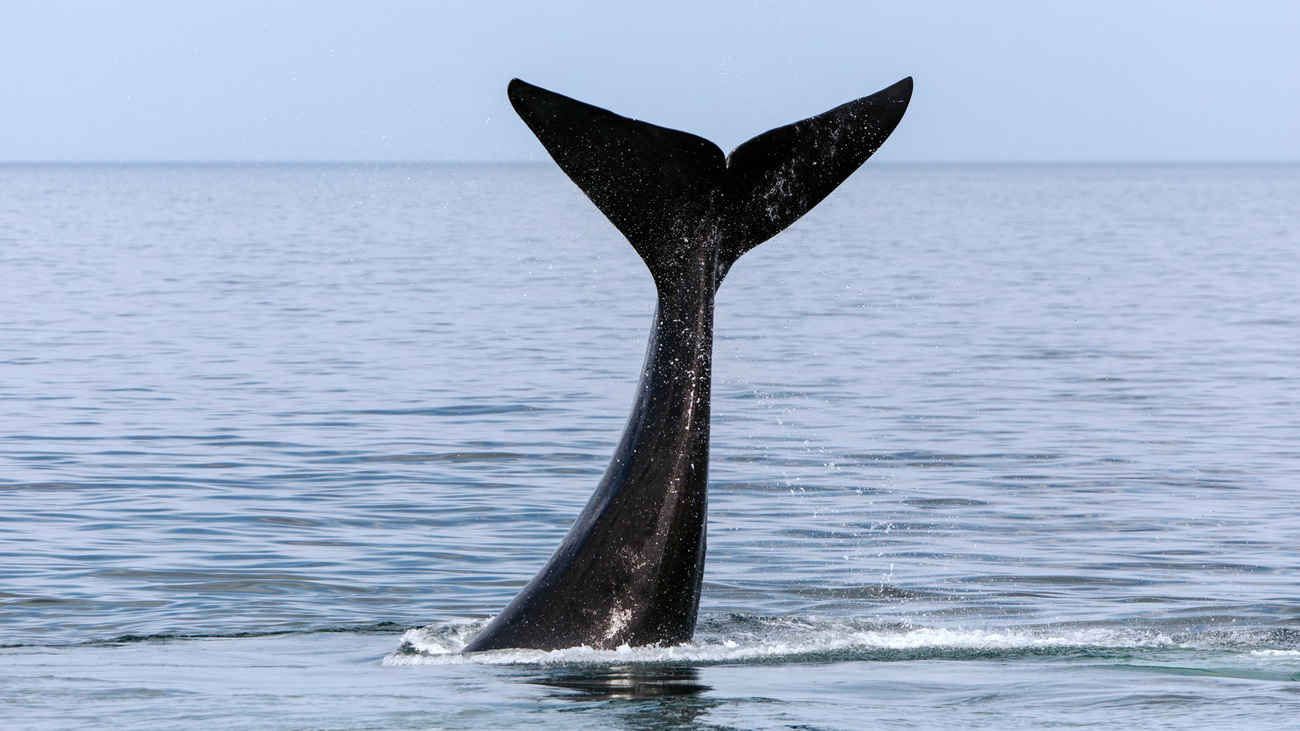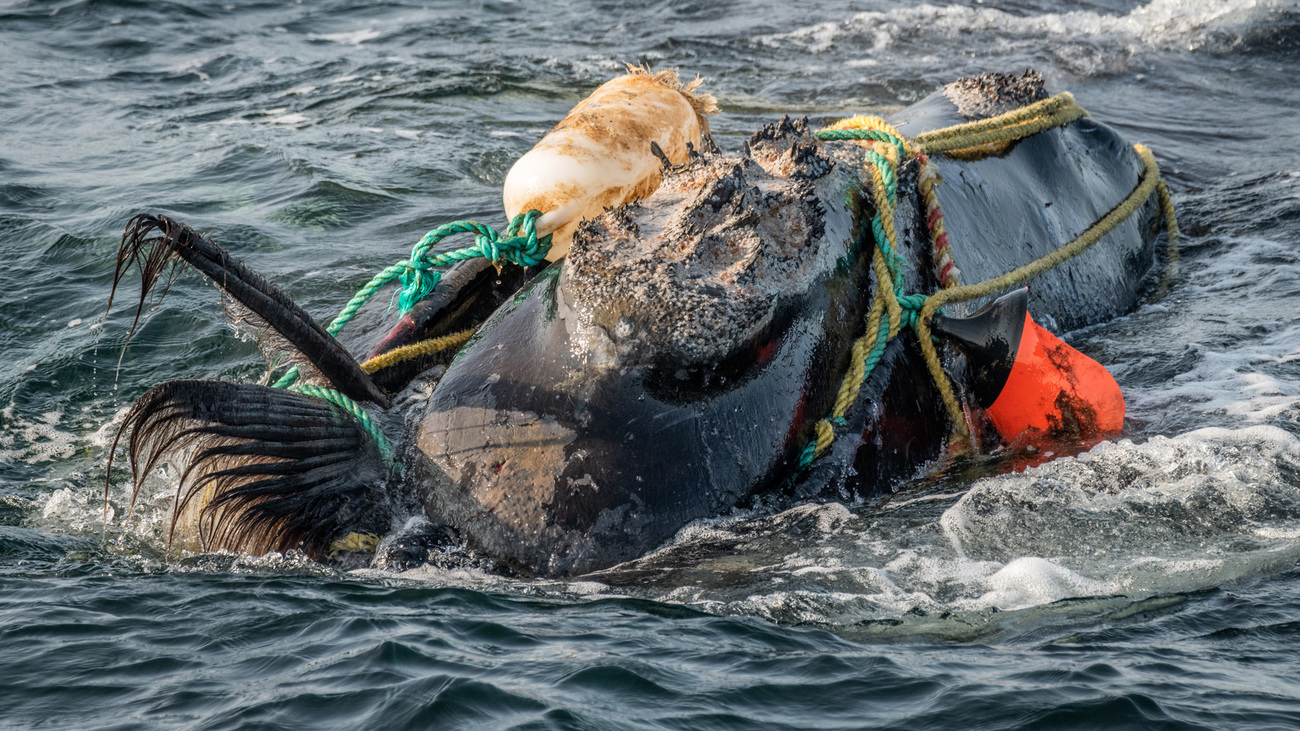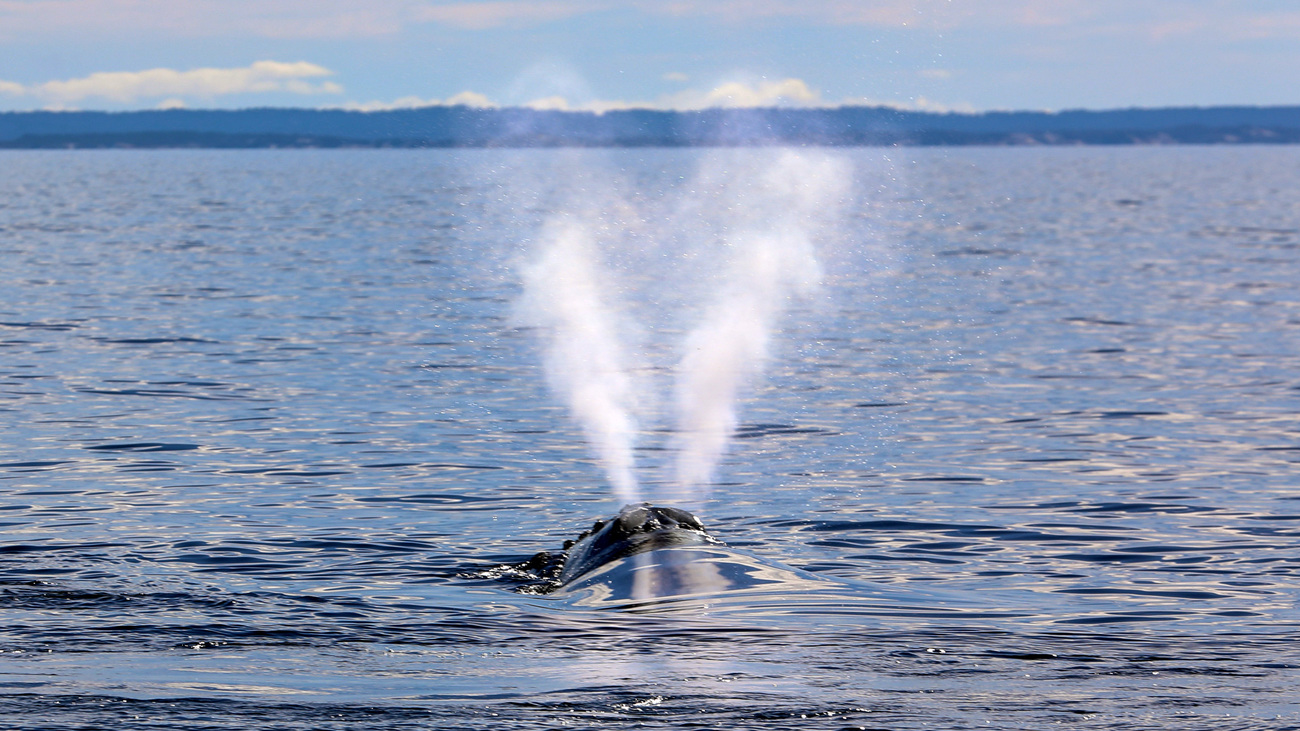Saving the North Atlantic right whale - North America
Don't fail our whalerare encounters with marine giants
rare encounters with marine giants

Spotting a living North Atlantic right whale is truly a special event, as there are so few left on Earth today. Humans usually see them only after they’ve become tragically entangled in fishing gear or killed by collisions with vessels.
The five-person crew of the IFAW-supported Song of the Whale research vessel is following North Atlantic right whales this summer through the shipping corridors and fishing grounds that intersect with the whales’ critical habitat and migration routes along the eastern coasts of the US and Canada. The overlap with humans has left this species critically endangered, with fewer than 340 individuals remaining.
As the crew traces the path of this vanishing species, they shared with IFAW their most memorable encounters with these marine giants.
horrific entanglement
For crew member Richard McLanaghan, who is also the director of Marine Conservation Research International, his most memorable encounter with a living North Atlantic right whale was a prelude to just such a tragedy.
He recalls: “The encounter with right whales that will always stick out in my mind more than anything else was a particular whale which had a really horrific entanglement.” Richard describes the whale’s plight, with a line wrapped so tightly around its body that it was slicing deeply into the skin. “The line was just cutting through the whale like a cheese grater,” he says.
“We spent many weeks tracking that whale and providing support to a disentanglement team who were trying so hard to save that whale.” Unfortunately, the attempts were unsuccessful. “You could see when you were close up to that animal that it was suffering in a way that you would never allow your pet to suffer,” says Richard.
Asked about what ultimately happened to the whale, Richard simply replied, “It died a really unpleasant death.”
Such deaths have become a catastrophic norm for North Atlantic right whales, whether humans are around to witness them or not.

sheer size on display
What is far less common and more awe-inspiring is seeing one of the animals alive and free of injury or entanglement, going about its usual business. One way to get a bird’s eye view of natural behavior is to be in a ship’s crow’s nest as one of the huge animals passes by.
That was the magic combination for Song of the Whale’s chief scientist Oliver “Ollie” Boisseau many years ago. “I was a quite a young inexperienced marine scientist and went up to the crow’s nest of the boat, about 30 feet above sea level.” That doesn’t sound like much, he says, but it gives a “whole new vista of the world.”
From his perch, Ollie spotted a characteristic V-shaped blow of the right whale. “As we got closer and closer, I could begin to sense the full size of these animals,” he says. “When you see them from the deck of a boat, it’s hard to get a sense of their proportions, but when you’re on a mast and you look down, you get a whole new vantage point. It’s just quite magical seeing the whale below in all its entirety, about the same length as the boat and almost as wide.”
Asked what he thinks might have happened to that whale, he says, “Those were slightly better days, before the numbers started to decline, and I like to think it’s still out there, thriving and striving and living its best life.”

a symbolic experience
First mate Killian Glynn also knows the secret of the crow’s nest.
Just this year, in January, he got to witness a mother and calf from that vantage point. He says it was especially exciting to see the calf, and from the crow’s nest, he could watch the pair even when they were fully submerged. Being on the boat and helping to protect the species that humans have affected so negatively was “incredibly fulfilling,” and to Killian, the experience felt symbolic of the meaning of their efforts.
The mother-calf pair were not the only whales they saw that day, however. Killian remembers another one, a 15-year-old male that the crew supported in a disentanglement effort, which he described as “awful.” They also had seen three males a few days earlier.
The most striking thing about that encounter, he says, is that they’d essentially seen almost 1% of the entire North Atlantic right whale population that day.
baby whale breaching
The two other crew members, skipper Niall MacAllister and crew member Judith Matz, shared their most magical moment seeing one of the whales. It was about 7 a.m., and Niall had just settled in with his cup of coffee as the boat began to steam away for the day. Suddenly, as he lifted his cup, he noticed something about 20 meters off the port side.
“It’s big and it’s definitely not a wave,” he says. “And lo and behold, this enormous animal came shooting out of the water, pretty much all the way out – the only thing left in the water was its tail. Then it came crashing down in the water with a mighty splash.”
Judith happened to see it all unfold, too. The whale was just a calf, she says. “I didn’t know they could breach because they are really big and rotund, but I guess a baby is more flexible. It seemed to have a lot of fun.”
Everyone tried to come out and take a picture, but the young whale’s encore consisted only of poking its head above the water briefly, says Niall.
“It was really exciting. I was exhilarated and surprised,” says Judith. “It was a lovely moment.”
Related content
Every problem has a solution, every solution needs support.
The problems we face are urgent, complicated, and resistant to change. Real solutions demand creativity, hard work, and involvement from people like you.